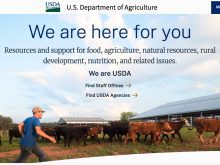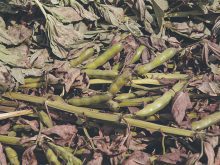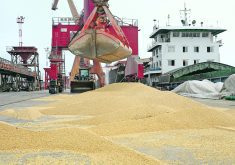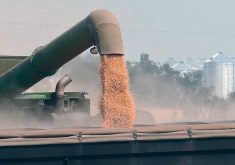Diverse crop rotations can benefit the performance of individual crops and the total performance of the rotation when growing conditions are difficult, says a new study from the U.S. Department of Agriculture.
However, the study also found it takes a long time to see the benefits of crop diversity, and significant barriers prevent farmers from adopting a complex cropping system.
“More diverse rotations increase management complexity, require additional knowledge and understanding of new crops and additional commercial relationships, and, possibly, the need for new equipment,” says a study published last month in One Earth.
Read Also

VIDEO: Case IH reveals new Optum tractor at Agritechnica 2025
Case IH reveals its new Optum tractor at Agritechnica 2025.
“Additionally, producers face the economic, social and psychological hurdles of growing less-valuable crops on premium land.”
Scientists from more than 15 universities, including the University of Guelph, participated in the USDA project on crop rotations.
Scientists from the department’s Agricultural Research Service (ARS) studied data from 20 long-term experiments, some spanning 60 years, across North America. The experiments evaluated a range of crops in rotation, including corn, soybeans, forages, cover crops and small grains.
They looked at a huge amount of data — 36,000 yield observations — hoping to understand the value of diverse rotations for individual crops and the performance of the entire rotation.
“Outcomes tended to be better for individual crops when grown in more diverse crop rotations across all growing conditions,” said a USDA summary of the study.
“Outcomes of complete rotation depended on which crops were grown in the crop rotation…. Diverse rotations improved outcomes of complete rotations under poor growing conditions.”
The wording in the published study is more specific.
The researchers found that corn and soybean “output increased as the number of species and rotation length increased.”
In some cases, though, having multiple crops hurt the overall performance.
“Diverse rotations reduced rotation-level output at eight sites due to the addition of lower-output crops such as small grains, illustrating trade-offs.”
When a lower yielding crop was included in a rotation, the result was sometimes negative.
“Small grain crops generally had lower yields compared to maize, and their market values on a dry-weight basis … were insufficient to generate comparable output,” the report says.
“The reduced frequency of higher-output crops in more complex rotations reduced rotation-level output at eight sites.”
The authors of the research study also acknowledged the economic realities of including cover crops and forages in a rotation.
Yes, those crops provide ecological and soil health benefits, such as water holding capacity and aggregate stability.
However, it’s economically difficult for farmers to seed forage crops instead of corn or soybeans on farmland that’s worth $9,000 or $13,000 per acre.
“Perennial crops had lower output in their establishment year, which represents an opportunity cost compared with rotations that only contained annual crops.”
Canadian studies have looked at the question of growing crops other than just canola and concluded that tight rotations are not more profitable.
There may be societal benefits from four or five crops in a rotation, such as decreasing the need for fertilizer or reduced pesticide use. However, convincing producers to alter their practices and add another crop isn’t easy because the economics of crop production encourage the planting of high value crops, the report says.
“Limited availability of local markets for crops such as small grains and perennial forages further inhibit farmers from growing and harvesting these crops,” the report says.
“Cover crops, which are not harvested, do not directly contribute to output and have been shown to have mixed impacts on yields of annual crops.”
Economic rewards may need to change to persuade farmers to try complex cropping systems. As well, economic consequences for tight rotations may be needed, the researchers said.
“Additionally, higher market valuation that increases prices for perennial crops (bioenergy or carbon capture) would further improve the … outcomes of more complex rotations.”
















